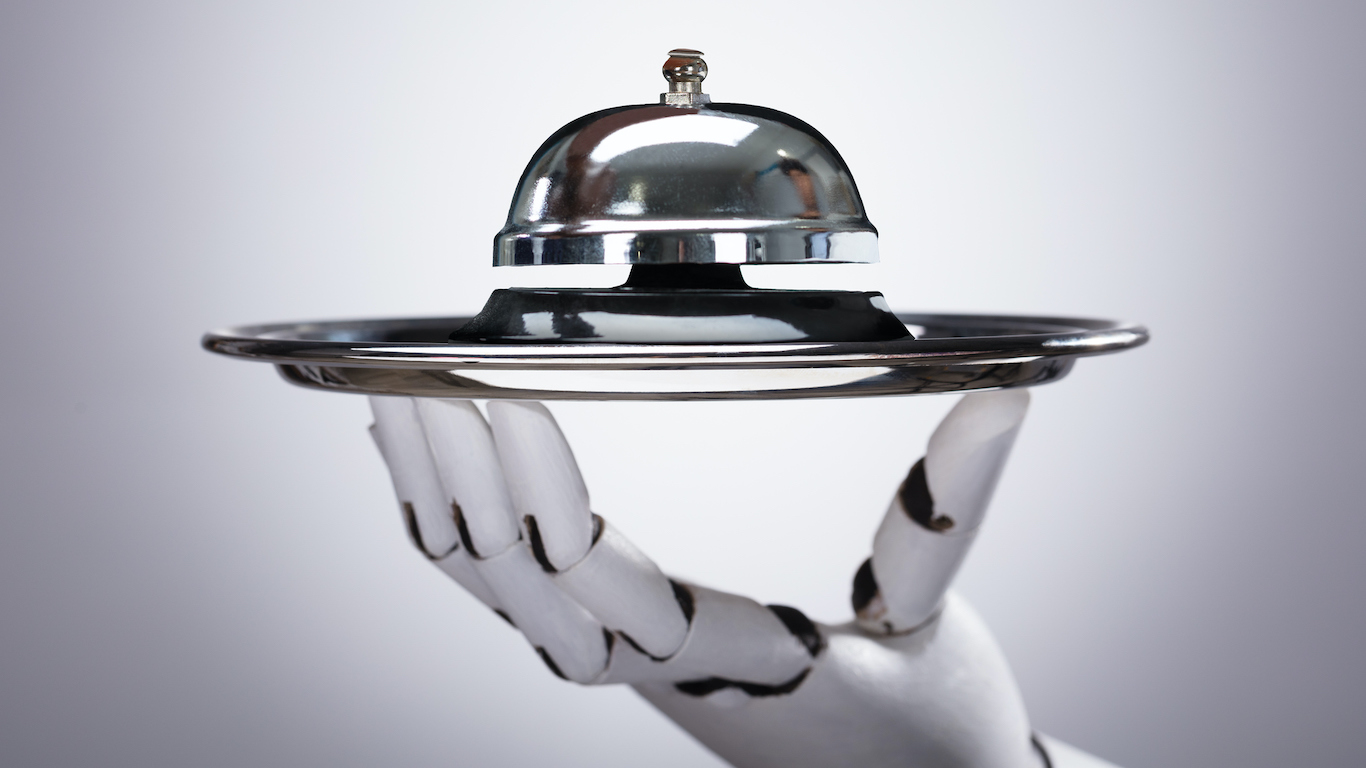
The restaurant business is full of challenges, not the least of which is the necessity for restaurateurs to keep up with the times. Foodservice is an industry whose parameters change constantly, responding to evolving consumer tastes, social pressures (eg., “Fight for $15” and #MeToo), new technology, and more.
Everyone involved in the restaurant business needs to keep up with the times and be aware of what’s going on not just within their industry but in the world at large — whether they’re KFC or McDonald’s franchisees, proprietors or rural diners or small-town cafés, or custodians of the best restaurants in America.
To be successful, though, restaurateurs — at whatever level — can’t just react; they have to anticipate. It is presumably with this in mind that the National Restaurant Association (the so-called “other NRA”) — which styles itself the world’s largest foodservice trade organization and represents more than 500,000 restaurant businesses around the country — has just released a report titled “Restaurant Industry 2030: Actionable Insights for the Future.”
Prepared by the NRA’s Research and Knowledge Group, in partnership with American Express and Nestlé Professional, the report is based on the premise that between now and 2030, the only constant in the business of feeding customers “will be the speed of change and the hyper-competition the restaurant and foodservice industry will face.”
Click here to see 21 ways restaurants are going to change
The report contains numerous projections and predictions. Some come from the NRA’s own accumulation of data. The heart of the document, however, is based on a study involving more than a hundred industry experts, including NRA officials, suppliers, manufacturers, distributors, and consultants.
The third section of the study is headed “The Disruptors: Think Ahead.” This is a list of 10 “developments and trends that have the potential to affect lifestyles and businesses,” assembled by a team of futurists from the consulting firm Foresight Alliance. These aren’t exactly predictions, but rather “possible futures.” (These are the biggest fads and trends in food and drink since 2010.)
According to the NRA, of this list of 10 possible trends “perhaps only three or four will happen, or maybe they’ll happen in different ways with effects we didn’t see coming.”
One thing is sure: Restaurants in 2030 will be different in many ways than restaurants today, and these are some things that will or might or possibly could change.
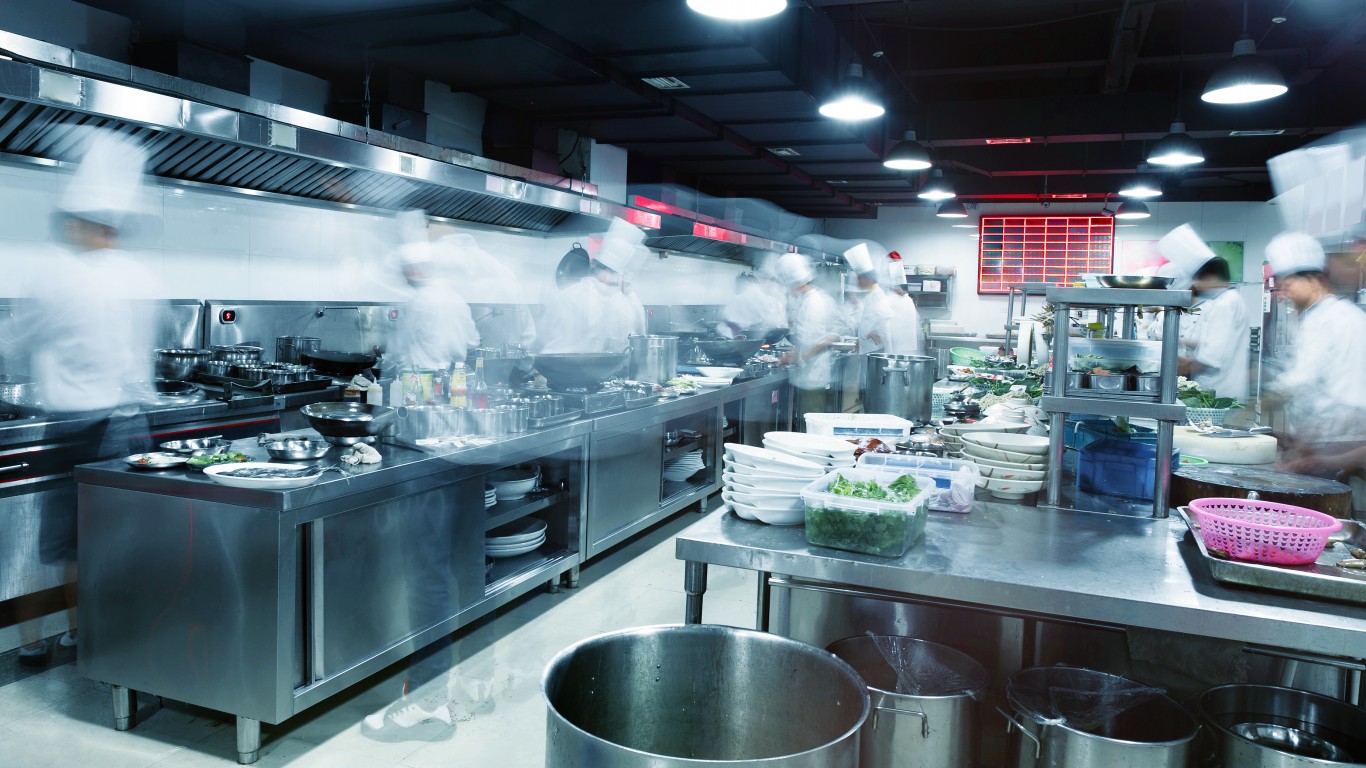
1. Virtual restaurants will proliferate
Also called “ghost restaurants” or “cloud kitchens,” these are facilities for preparing food for delivery independent of actual walk-in restaurants. “The rise of ‘placeless’ restaurants,” reads the report, “will challenge and redefine the concept of what a restaurant is.” Nonetheless, ghost restaurants could also sometimes manifest themselves in more corporeal form as surprise pop-ups that would “bring experience of these restaurants to the real world and build exclusivity.”
[in-text-ad]

2. Self-driving cars might deliver your food
Autonomous vehicles (AVs) are coming. They might become practical as delivery carriers before they start actually driving people around, and will even be able to pick up food at drive-through windows (which will require some redesign of drive-through layouts). When they do start carrying people, their passengers will have more time to eat and be able to eat different kinds of food because they’ll have both hands free.

3. Non-food companies will take food orders
As people increasingly order restaurant food to be delivered, rather than going out to restaurants, new alliances can be formed. For instance, says the report, “a media-streaming service could buy or pair with existing meal delivery services to create an all-in-one dinner and entertainment experience.”

4. Restaurants will get smarter
Information technology has already made inroads in the food service business, but that involvement will only increase, with “an evolving digital ecosystem of apps, services and personal AI assistants…” Among other things, this will improve health and safety training, staff certifications, and food sourcing, and allow for better management of allergens.
[in-text-ad-2]
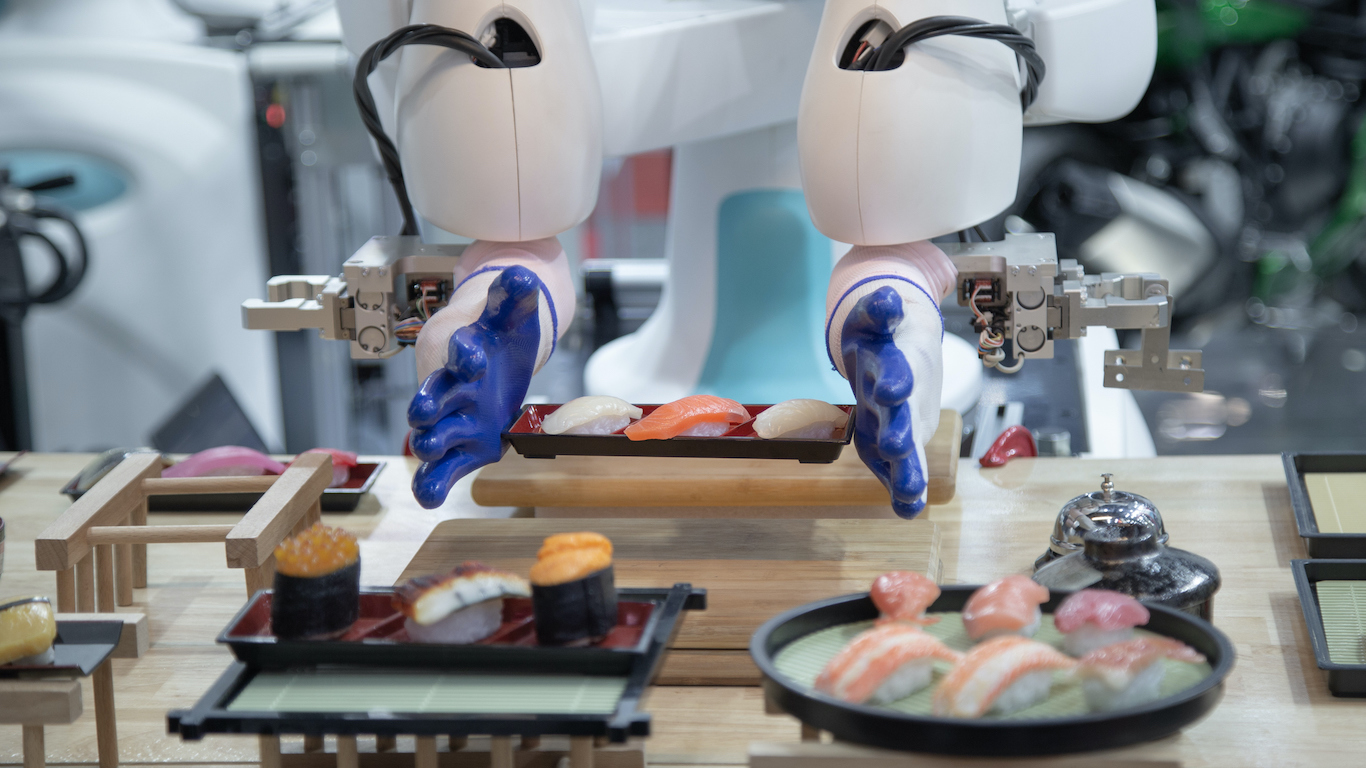
5. Robotics are coming
Touchscreen ordering kiosks are already appearing at McDonald’s and other chains, but back-of-the-house automation is coming, too. It may be especially suited to performing some of the more repetitive food prep tasks. Chefs will work collaboratively with these systems, which might, according to the report, “even permit motion-capture replication of the movements of chefs.”

6. Algorithms might produce new taste experiences
As AI systems collect and analyze data about foods, beverages, ingredients, and tastes, new recipes and kinds of food and drink could be created. “Some AIs,” the report predicts, “could become as well-known as human chefs, baristas and bartenders.”
[in-text-ad]

7. Apps may become more important than restaurants
With the rapid rise of food delivery apps and the expected acquisition of ghost restaurant URLs by delivery services, consumers might become more loyal to the apps than to any real restaurants — at least when they’re ordering in. If they want a certain kind of pizza or a particular Chinese dish, that is, they might not care where it comes from as long as obtaining it is fast and easy.

8. Food service and health care could merge
Citing an aging population, advances in genetic knowledge, and rising rates of so-called lifestyle diseases like obesity and type 2 diabetes, the report suggests that meals might one day be prescribed by doctors and even paid for by insurance companies. Those companies might also begin to require information about what and how their clients are eating.

9. Food safety will improve
“Technology will be a game-changer in food safety,” according to the report. Restaurant inspection results will be easily available to the public. Blockchain and bar-coding technology will improve traceability of products. Increased data access will quickly identify sources of foodborne illnesses and remove problem foods. New security measures will help prevent intentional food contamination.
[in-text-ad-2]

10. Government regulation will increase
Data privacy, third-party delivery, and environmental concerns are among the areas in which state and local governments are expected to ramp up operating rules. The foodservice industry will respond by employing more lobbyists, especially at the city level.

11. Climate change could affect menus and prices
What the report calls “weather volatility” could affect growing patterns for both standard and specialty crops and encourage the popularity of lab-grown and plant-based meats or meat substitutes. Carbon taxes on foods themselves or on their production and distribution processes could make them more expensive.
[in-text-ad]

12. Restaurants will get greener
More eating places will be conceived and designed to be energy efficient and to minimize waste, and they’ll have smaller physical footprints due to increased delivery and takeout. Packaging for delivery and takeout will become more sophisticated and effective.

13. People will spend more on restaurant food
Total restaurant industry sales for 2018 amounted to $833 billion. By 2030, that figure is projected to reach $1.2 trillion.
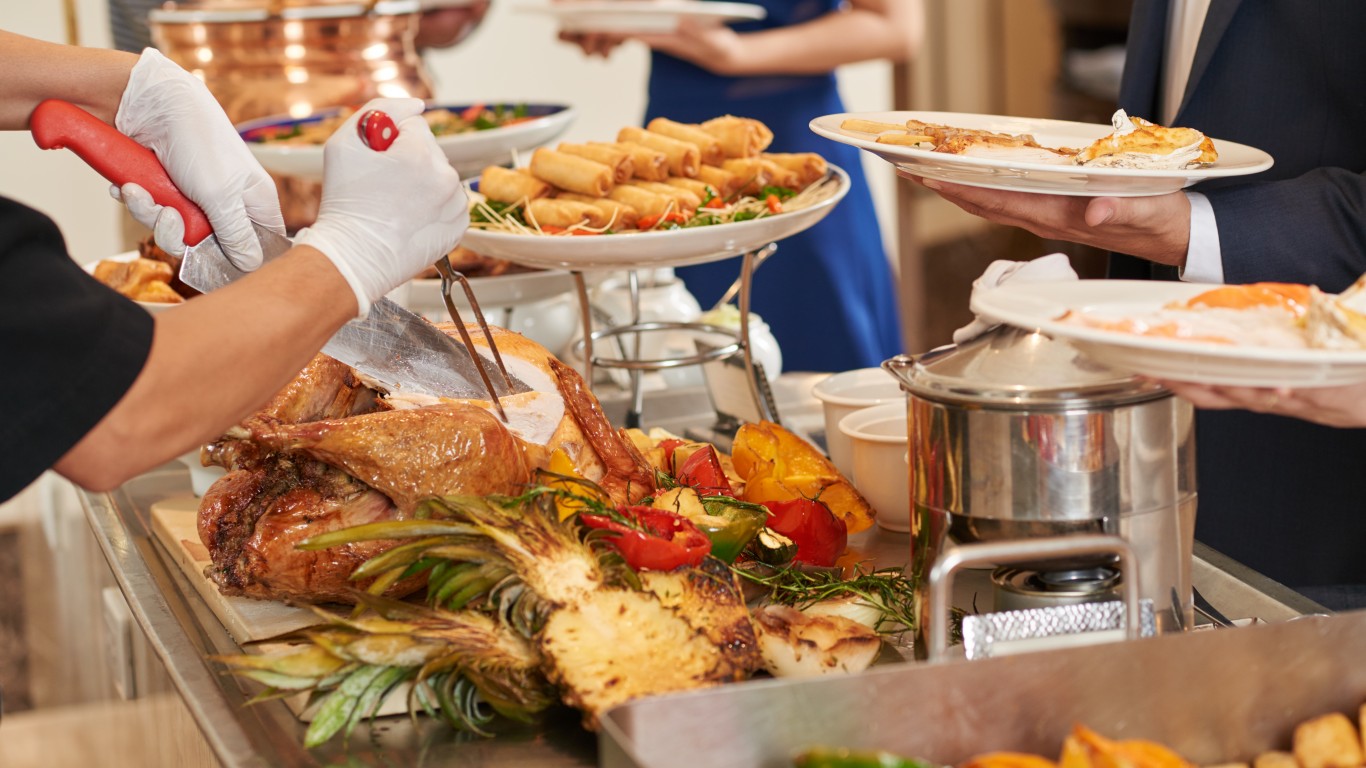
14. More people will be working in restaurants
Data suggests a job growth rate of 8.5% in the U.S. foodservice between last year and 2030. Texas and Nevada will experience an increase of 17%, while six other states will exceed 12% job growth.
[in-text-ad-2]

15. Restaurant workers will be considerably older
By 2028, it is projected that there will be 1.2 million fewer 16-to-24-years-olds in the food service workforce and 6.1 million more adults aged 65 and over.

16. More women will rise into management
One of the most likely developments in food by 2030 will be an increase in the number of women in upper management restaurant industry jobs.
[in-text-ad]

17. More minorities will rise into management
The restaurant industry is already a notably diverse business, but, like women, more minorities will take jobs on the upper management level, and the foodservice workforce in general will become even more diverse.

18. The definition of ‘restaurant’ will change
Some establishments, the report suggests, might morph into hybrids, offering full service, self-service, takeout, delivery, and meal kits all in one location. Restaurant layouts will be planned or revised to accommodate delivery and takeout functions. Food halls will allow people to combine eating out with food shopping for the home.

19. Menu choices will multiply
Restaurant menus will offer more healthy (including plant-based) options. As consumer interest in food sourcing will increase and diners’ palates will grow more sophisticated as global cuisines become more and more available around the country, more choices will be added to menus.
[in-text-ad-2]

20. Customer outreach will get more sophisticated
Building on existing social media marketing programs, operators will get more personal and localized, perhaps using geo-tracking and even facial recognition technology to anticipate customer needs and wants. Frequent-diner databases and loyalty programs will become more common.

21. Restaurants will become ‘third spaces’
Futurists think that restaurants could evolve more than they already have into “third spaces” — basically social meeting places that act as a bridge between home and work. The report foresees “American versions of German biergartens, with less emphasis on table turnover and more emphasis on facilitating repeat socializing by customers.” Optimistically, it also suggests that restaurants could become “an arena in which people actively try to undo some of the polarizations that can divide American society.”
Get Ready To Retire (Sponsored)
Start by taking a quick retirement quiz from SmartAsset that will match you with up to 3 financial advisors that serve your area and beyond in 5 minutes, or less.
Each advisor has been vetted by SmartAsset and is held to a fiduciary standard to act in your best interests.
Here’s how it works:
1. Answer SmartAsset advisor match quiz
2. Review your pre-screened matches at your leisure. Check out the advisors’ profiles.
3. Speak with advisors at no cost to you. Have an introductory call on the phone or introduction in person and choose whom to work with in the future
Get started right here.
Thank you for reading! Have some feedback for us?
Contact the 24/7 Wall St. editorial team.
 24/7 Wall St.
24/7 Wall St.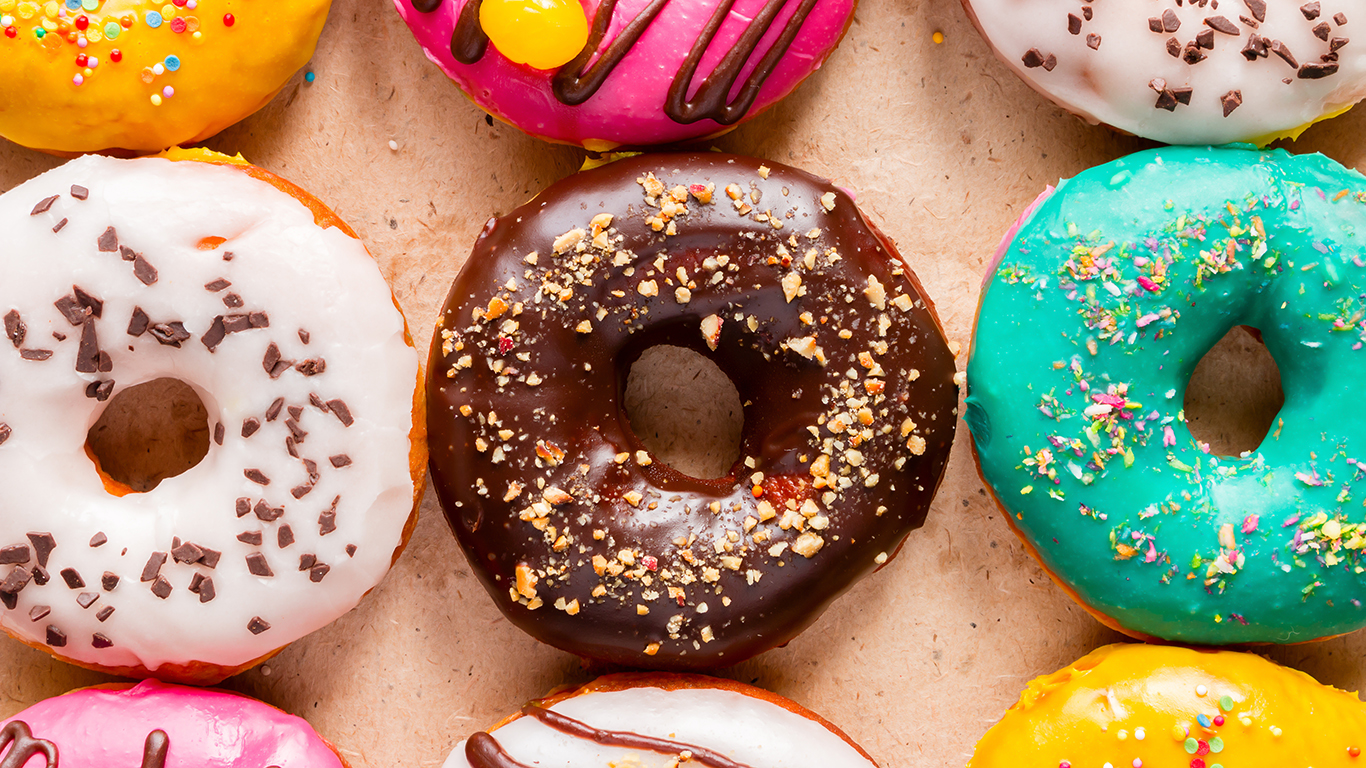 24/7 Wall St.
24/7 Wall St.


